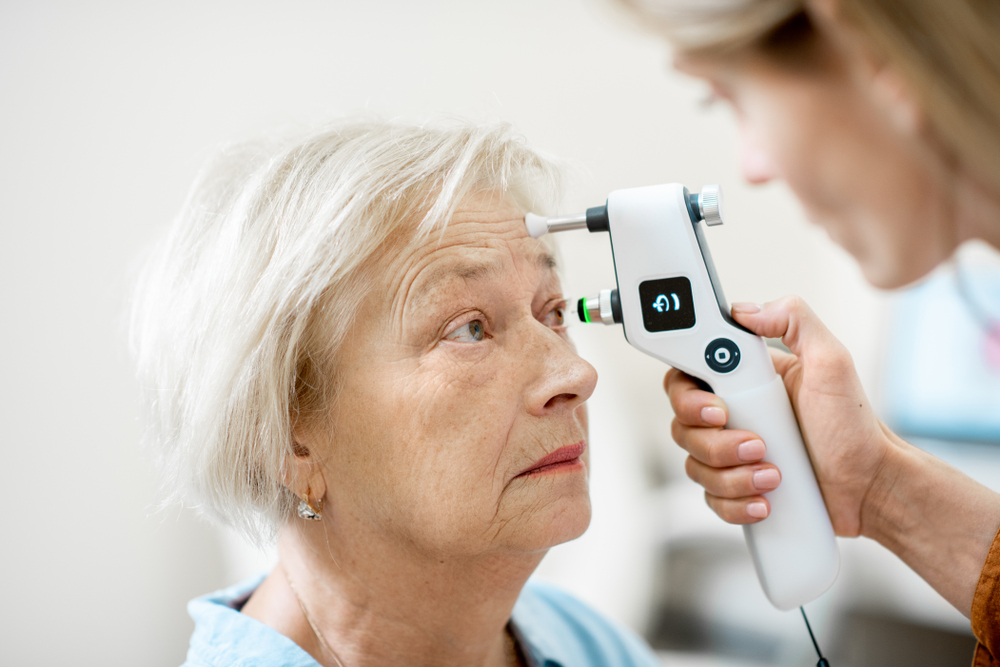
Diabetic retinopathy is an eye disease that results from diabetes complications. It affects the retina’s blood vessels and can cause vision loss or blindness. The disease typically does not show symptoms in the early stages.
People with diabetes need regular dilated eye exams to detect signs of the condition. Early detection can help protect their vision. Proper diabetes management can prevent the development of the disease.
What Is Diabetic Retinopathy?
Diabetic retinopathy is a leading cause of vision loss for diabetic individuals. Uncontrolled blood sugar from diabetes can damage the vessels in the light-sensitive eye tissue, the retina. This part of the eye receives light and sends signals to the brain through the optic nerve.
When sugar blocks the tiny vessels, it causes them to bleed or leak fluid. To compensate for the blocked vessels, the eyes grow new abnormal blood vessels that bleed easily. Besides causing vision loss, diabetes can increase the risk of glaucoma and cataracts.
Symptoms of Diabetic Retinopathy
The early phases of the disease typically do not show symptoms. Some notice vision changes such as difficulty with far vision or trouble reading. During the later stages, the retina blood vessels bleed into the vitreous gel. It can cause symptoms such as:
Floaters or streaks in the vision
Dark or blank spots
Blurry vision
Fluctuating vision
Vision loss
Careful management of diabetes is the most ideal way to avoid vision loss. Failing to get immediate treatment can lead to scar formation in the back of the eye. The bleeding from the vessels can also worsen over time.
Risk of Diabetic Retinopathy
Any individual with diabetes can develop diabetic retinopathy. It includes those with type 1, type 2, and gestational (pregnancy) diabetes. The risk increases based on how long one has had diabetes. Over time, more than 50% of people with diabetes will develop the eye disease.
Fortunately, controlling diabetes can reduce this risk. Women who develop diabetes during pregnancy have a high risk of getting diabetic retinopathy. Regular comprehensive eye exams, especially during pregnancy, are essential for detecting early signs of the disease.
Preventing Diabetic Retinopathy
The best way to reduce your risk of diabetic retinopathy is by managing your diabetes. You can maintain healthy blood sugar levels through a proper diet and routine physical exercise. Follow the doctor’s instructions on using insulin and other medication. A lab test (A1C) can show your blood sugar levels over three months. It can guide you to set personal goals for managing your condition.
Treating Diabetic Retinopathy
Treating diabetic retinopathy will depend on the stage of the disease. Treatment options include:
Using medications. Anti-VEGF injections can slow or reverse the disease
Laser treatment to reduce retina swelling or shrink blood vessels
Eye surgery. A vitrectomy helps remove scars in the eye
During an eye exam, the doctor will dilate the pupils to check the eyes. The painless procedure helps widen the pupils, allowing the doctor to effectively examine the back of the eye. A fluorescein angiogram test helps examine people with severe diabetic retinopathy. It allows doctors to see images of retina blood vessels.
For more information on what diabetes retinopathy is, visit Alamo Eye Care at our San Antonio or Austin, Texas, office. Call (210) 403-9050 to schedule an appointment today.







